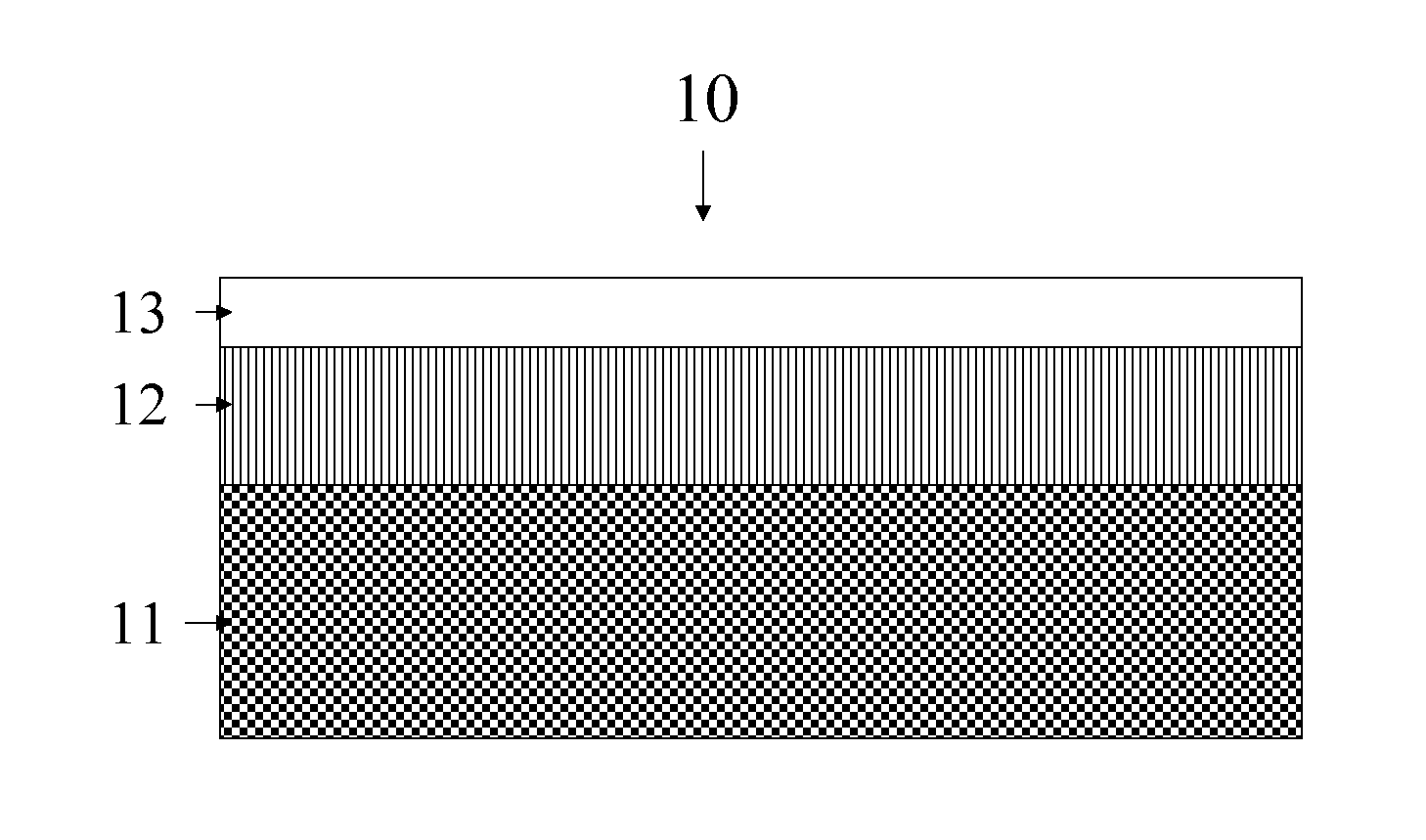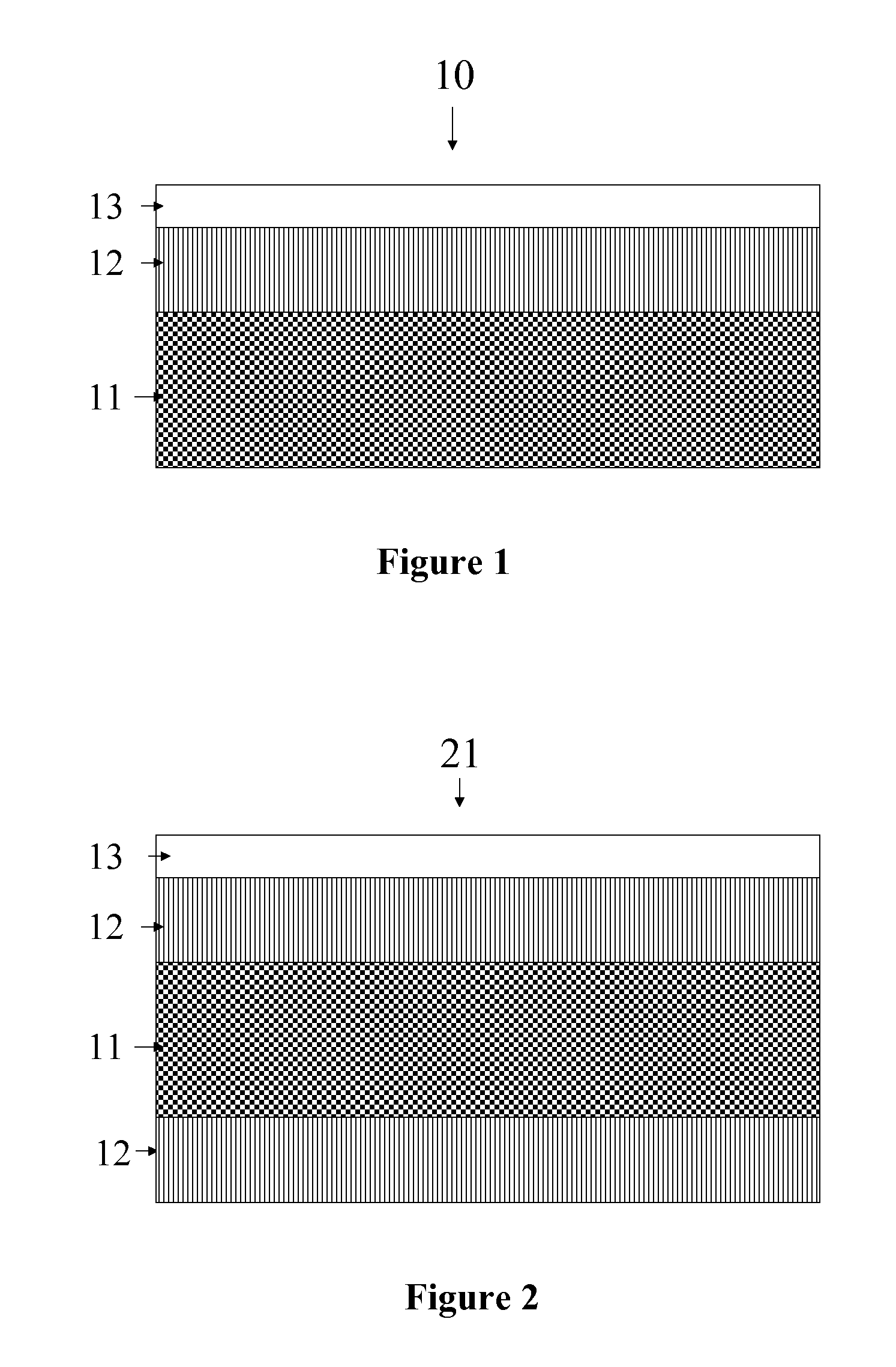Skid Resistant Surfaces
a technology of skid resistance and surface, applied in the direction of flooring, treads, building repairs, etc., can solve the problems of difficult or impossible to unroll the underlayment, difficulty in maintaining unrollability, etc., and achieve excellent skid or slip resistance, easy rolling and unrolling, and easy installation
- Summary
- Abstract
- Description
- Claims
- Application Information
AI Technical Summary
Benefits of technology
Problems solved by technology
Method used
Image
Examples
example 1
[0063]Skid resistance was measured in a “walk on” test as follows. Underlayment specimens to be tested were mechanically attached to a sheet of plywood and positioned at a test angle of 40°. The samples were tested dry and wet sprayed with water prior to testing. A tester (“walker”) walks over the sample and compares the skid resistance of the sample to a “control”. The walker judges the skid resistance to be significantly better (+2), moderately better (+1), the same (0), moderately worse (−1), or significantly worse (−2) than the control. Three to 4 walkers are used for each comparison. Average values are reported.
[0064]For all tests a membrane with the construction depicted in FIG. 3 was used for the tests. Layer 11 is a 60 to 80 g / m2 woven polypropylene mesh. Layers 12 comprise 20 to 35 g / m2 extrusion coated polyolefins. For some samples top layer 12 is pigmented grey. For other samples top layer 12 is pigmented white. Layer 14 comprises 5 to 10 g / m2 of an ethylene-ethylacrylate...
example 2
[0068]Accelerated ageing tests, EMMAQUA, were conducted as well. The test is run by DSET laboratories. Samples were exposed to 28 mj, 84 mj, and 168 mj, which are equivalent to one month, three months, and six months, respectively, of outdoor exposure in a hot climate. A membrane with the construction depicted in FIG. 3 was used for all tests. Layer 11 is an 80 g / m2 woven polypropylene mesh. Layers 12 comprise 20 to 35 g / m2 extrusion coated polyolefins. For some samples top layer 12 is pigmented grey. For other samples top layer 12 is pigmented white. Layer 14 comprises 5 to 10 g / m2 of an ethylene-ethylacrylate copolymer. Layer 13 is the non-skid coating and various formulations were evaluated. The approximate coating weight is 10 g / m2 . All coatings comprise the polymer composition (organic solids) and an inorganic filler, calcium carbonate. Three organic solids formulations were evaluated. The samples are 3″×6″, which are not large enough for a walk-on test, but may be used to jud...
PUM
 Login to View More
Login to View More Abstract
Description
Claims
Application Information
 Login to View More
Login to View More - R&D
- Intellectual Property
- Life Sciences
- Materials
- Tech Scout
- Unparalleled Data Quality
- Higher Quality Content
- 60% Fewer Hallucinations
Browse by: Latest US Patents, China's latest patents, Technical Efficacy Thesaurus, Application Domain, Technology Topic, Popular Technical Reports.
© 2025 PatSnap. All rights reserved.Legal|Privacy policy|Modern Slavery Act Transparency Statement|Sitemap|About US| Contact US: help@patsnap.com



